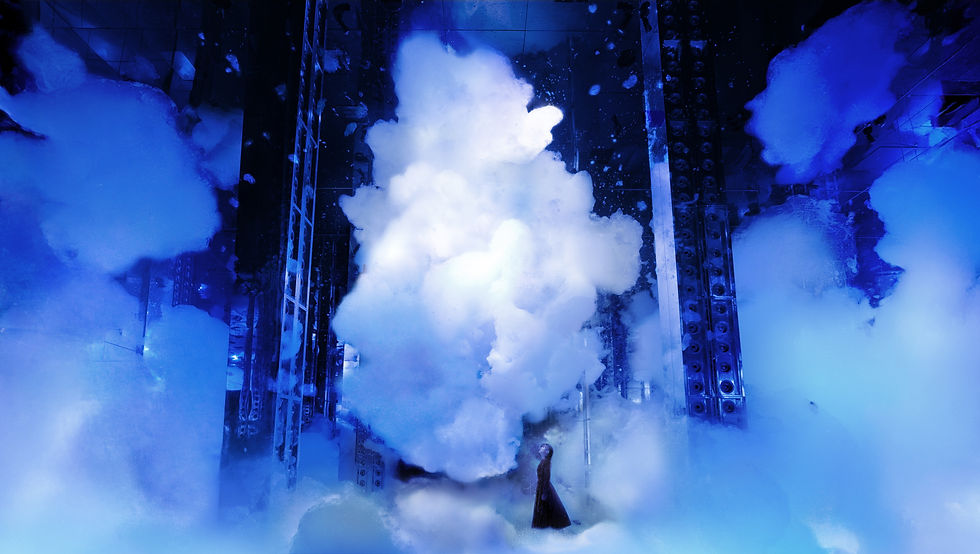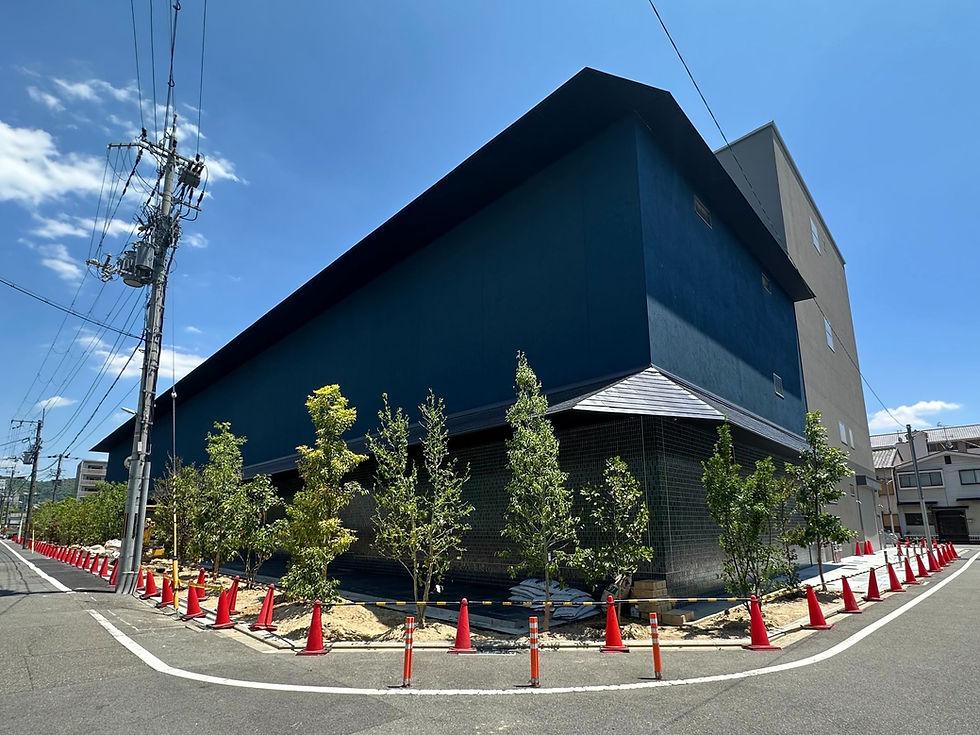teamLab Biovortex Kyoto Opens Fall 2025: A New Dimension of Art and Existence in Japan’s Cultural Heart
- Gen de Art

- Aug 6
- 3 min read
This October, the ancient city of Kyoto will witness the opening of one of the most ambitious cultural projects in recent memory: teamLab Biovortex Kyoto, a permanent art museum created by the boundary-pushing collective teamLab. Spanning over 10,000 square meters, the space will become the largest of the group’s installations in Japan to date—surpassing even teamlab Planets TOKYO DMM and the newly opened teamLab Borderless: MORI Building DIGITAL ART MUSEUM.
Yet beyond its size, teamLab Biovortex Kyoto represents a new phase in teamLab’s evolution. It challenges how we understand matter, existence, and our relationship with the world around us.
Sculptures Without Mass
At the heart of the museum are what teamLab calls " Environmental Phenomena "—artworks that don’t exist as solid forms, but as ever-changing phenomena generated by energy and environment. Instead of crafting traditional objects, the team has focused on constructing entire environments where artworks are born out of carefully created physical conditions.
“Human beings have always created things—glass bottles, iPhones, everything—by shaping solid materials,” says Toshiyuki Inoko, founder of teamLab. “But in this project, we aren’t making solid objects. We’re building environments that generate energy, and from that energy, a phenomenon arises. That phenomenon becomes the artwork.”
One such phenomenon is the ethereal Massless Amorphous Sculpture, a massive floating form that hovers within a space filled with bubbles. It cannot be moved, touched, or reshaped by force. And yet, it reacts to people’s presence—splitting, restoring itself, or collapsing entirely when pushed beyond repair.
This, Inoko explains, isn’t just about aesthetics or spectacle. It’s a direct challenge to how we define “existence.” “We tend to think the world is made of solid things, each existing independently. But that’s just a limited view. Life itself—like our own bodies—only exists through interaction with the environment.”

The Environment as Artist
In this worldview, art is no longer a static object created by a human hand. It is a relationship, a moment, a phenomenon. “These artworks exist only as long as their environment allows them to,” says Inoko. “It’s like a vortex in the sea—take away the current, and the vortex disappears.”
Other installations in teamLab Biovortex Kyoto carry the same philosophy. Massless Suns and Dark Suns plays with perception, presenting light-based spheres that appear to float, vanish, or shift in response to the viewer’s position—despite having no physical form. Traces of Life records the footprints of those who walk through the space, temporarily embedding their presence into the artwork, only for it to fade again. Without people, these works do not exist at all.
“The idea that an artwork can be inseparable from its environment—constantly changing, never fixed—is central to everything we’re doing here,” Inoko notes. “Even the boundaries of the work are ambiguous. It exists, but not in the way we’ve traditionally defined art.”
Kyoto as a Living Canvas
Choosing Kyoto as the home for this next chapter was no accident. The museum is being built on city-owned land in the southeastern Kyoto Station area, as part of an urban redevelopment project. While teamLab is leasing the space as a private operator—“this isn’t a public facility in the traditional sense,” Inoko clarifies—the initiative aligns closely with the city’s cultural revitalization goals.
“Kyoto is a place where old and new cultures continuously overlap,” he reflects. “There’s a long lineage of cultural evolution here—new ideas emerging while the past remains present. If we can become even a small part of that continuum, that would be enough.”
In this sense, teamLab Biovortex Kyoto is not just a museum. It is a living system, growing out of its context and contributing to Kyoto’s ongoing story.
A Museum You Must Enter to Complete
Like all teamLab spaces, teamLab Biovortex Kyoto is designed to dissolve the line between viewer and artwork. It cannot be fully understood from a distance. You must enter, move, engage, and change the work with your presence.
Inoko puts it simply: “I hope that by experiencing these artworks, people can expand the way they see the world. The more we recognize that the world isn’t made of isolated, solid things—but of relationships, flows, and perceptions—the more deeply we can connect to it.”

Congratulations on a New Cultural Era
As Kyoto prepares to open its doors to this landmark project, teamLab Biovortex Kyoto promises to be not only an extraordinary artistic destination, but a philosophical and sensory reawakening. It invites visitors to reimagine the very concept of existence—both their own, and the world’s.
In the shifting light of a bubble-filled space, under the weight of nothing at all, a new way of seeing begins.
🔗 More InformationteamLab Biovortex Kyoto Official Site
Address: 21-5 Higashikujo Higashi Iwamotocho, Minami-ku, Kyoto 601-8006
7-minute walk from JR Kyoto Station (Hachijo East Exit)











